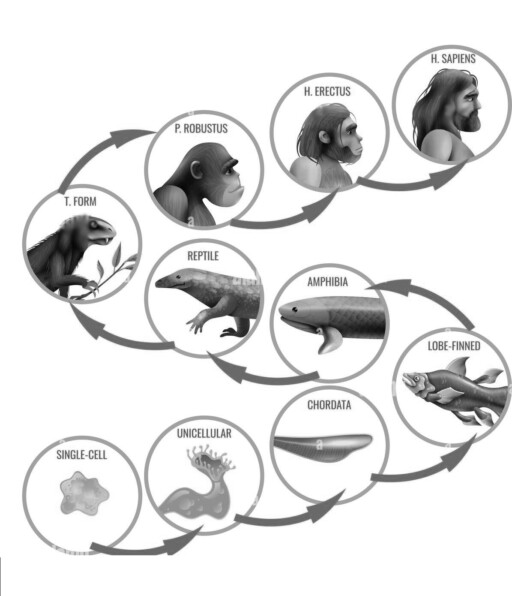
Being liked. Being seen. Being right.
You are not chasing truth. – You are chasing a signal.
The loop tells you
what is “good,” what is “normal,” what is “you.” But ask yourself:
-
Would you still say it if no one approved?
-
Would you still do it if no one watched?
-
Would you still create if no one clapped?
Developing
Recognition isn’t feedback. It’s control.
And until you see it, it speaks with your voice.
And you will call it truth, identity, morality, love.
But it’s still recognition.
And it’s still the loop.

Evolution’s Invisible Loop
Before language, before belief, before civilization—there was recognition.
The need to be seen, accepted, and remembered is not a social preference. It is a biological mechanism—a loop wired into the nervous system to guide survival, adjustment, and reproduction. Every organism, from the simplest to the most complex, learns what to do through feedback. Recognition is that feedback. It tells the body: You’re safe here. You belong here. Do this again.
What begins as a survival function becomes a pattern. What becomes a pattern becomes a loop. And in humans, that loop now drives attention, identity, performance, morality, and desire. We don’t just act—we act to be seen.
Eidoism begins by revealing this loop. Not to shame it—but to exit it.
This is not a psychological flaw. It is evolution’s invisible script.
Evolution knows only three tasks:
Adjust
Survive
Mate
Evolution’s Core Logic

Everything alive—plant, animal, or human—must fit its environment, endure its threats, and continue its genetic line. To accomplish this, life developed a core mechanism of adaptation: feedback-based recognition. It is not a modern social construct. It is an ancient evolutionary algorithm.
Basic Facts
Most frequent missunderstandings
Recognition as Feedback
Being seen, remembered, and validated acts as the brain’s internal compass. Recognition—through approval, attention, or social cues—signals alignment with the environment. From early life to advanced mammals, it functions as a reward system for adjustment:
-
A baby smiles and is smiled back at: loop reinforced.
-
An animal adapts its behavior to a pack hierarchy: loop reinforced.
Without recognition, there’s no feedback—no learning, no adaptation, no survival. Recognition isn’t a luxury; it’s the silent scaffold of life. It teaches what to repeat, what to avoid, and what secures belonging. It is not outside evolution. It is evolution’s whisper in the nervous system.
The Biological Basis
Modern neuroscience confirms this evolutionary loop:
-
The dopaminergic reward system (VTA, nucleus accumbens) reinforces behaviors linked to recognition.
-
The anterior cingulate cortex processes social pain, rejection, and evaluation.
-
The amygdala and hippocampus store emotional patterns tied to being seen or excluded.
Recognition is chemically coded into motivation. We do not simply want to live—we want to live as seen. And the more complex the species, the more layered this demand becomes.
From Function to Loop
In early life, recognition kept the organism aligned. But as humans evolved abstract cognition and symbolic language, recognition became self-reinforcing. We no longer seek feedback from nature—we seek it from each other. And eventually, from mirrors, screens, applause, followers.
The demand for recognition—once a learning compass—became a loop.
-
A hunger.
-
A substitute for necessity
Control: Seeing the Loop
Freedom begins by seeing the loop:
-
Are you acting from real need—or the need to be seen?
-
Is your creativity feeding form—or feeding applause?
Recognition cannot be fully eliminated. But it can be seen. Once seen, it loses its grip. You may still act—but from quiet necessity, not hunger.
That is where form returns.
That is where freedom begins.

